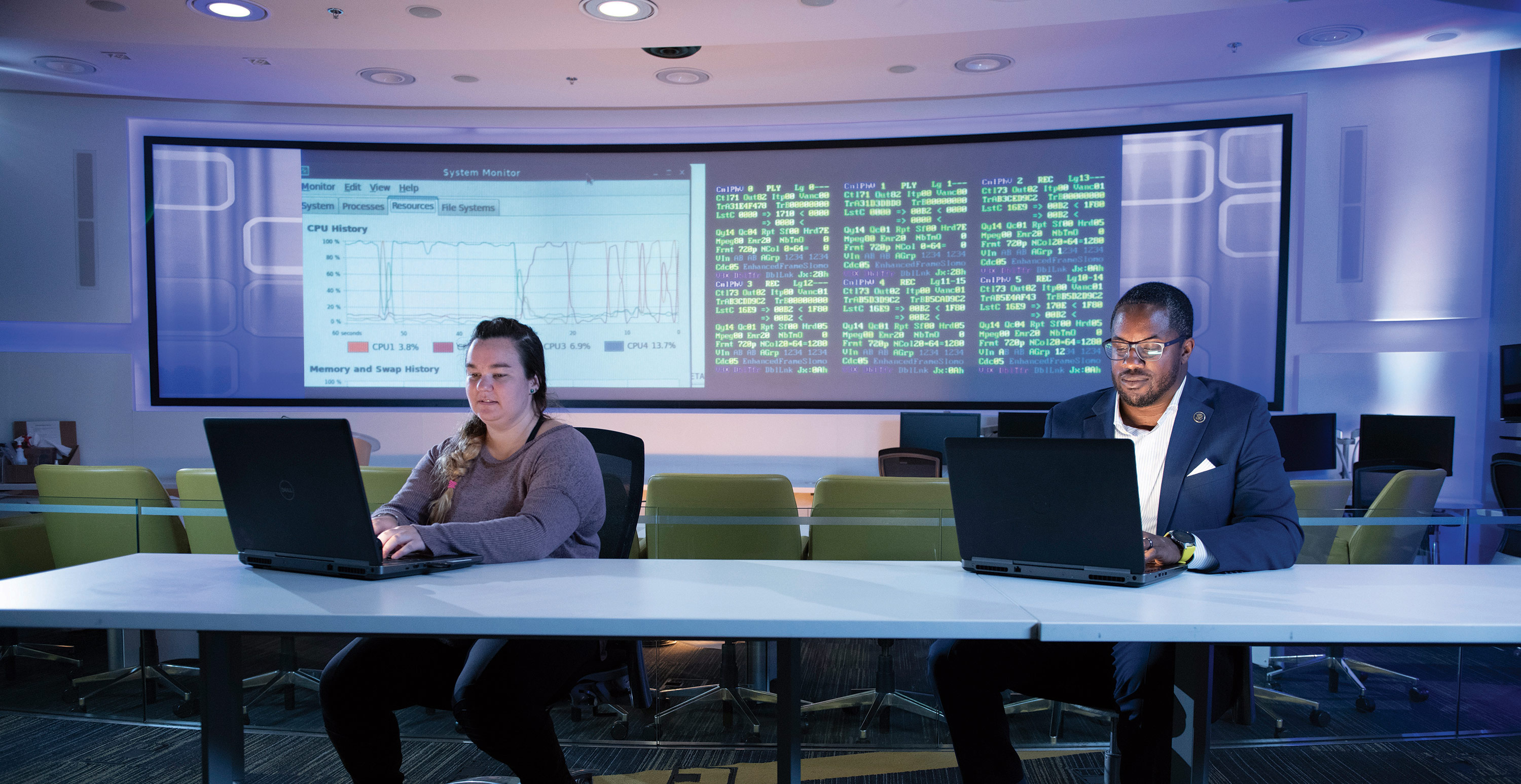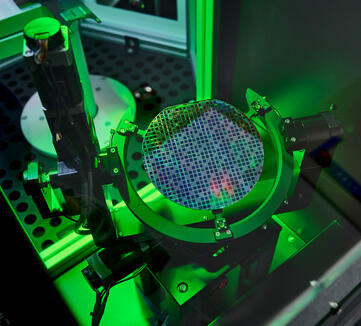Ahead of the Curve: Scouting for Disruptive Technologies

By Tracy Staedter
Innovation is changing the world at exponential speeds. In just the last 10 years, tablet computers, streaming high-definition video, AI-based virtual assistants, drones, and internet-connected gadgets enabling ride-sharing and room-sharing have become ubiquitous. These disruptive technologies have fundamentally shifted business models, altered the way people live, work and play and put imagined futures within arm's reach.
Many of these advances were either created or matured in the commercial sector, which invests billions of dollars annually into research and development. “The implication is that a large portion of technology development has shifted to the private sector, rather than from government- or defense industry-funded R&D,” says Jonathan Green, Director of Disruptive Concepts and Technologies (DC&T) at Northrop Grumman.
This organization was formed to assess early-stage ideas and innovations to include scouting the commercial sector for technologies that are relevant to Northrop Grumman business areas and their customers' missions. This requires the team to both project when those technologies have the potential to disrupt existing approaches and understand how they can be leveraged to address a particular problem.
“To be more innovative for our customers and deliver capabilities more rapidly, we create an environment where our scientists and engineers are encouraged to think big and fail fast, to test the limits of possible, and to leverage external technologies whenever it provides an advantage” says Green.

Disruptive Technology Examples: the Obstinate and Blinkered
It's not always easy to spot disruptive technologies. They emerge unexpectedly, sometimes in completely unrelated fields or as seemingly innocuous, incremental advances to an already-existing technology. But when they take hold they can profoundly change or completely wipe out an industry, says Green. “That's the hallmark of a disruptive technology,” he says. The business landscape is littered with stories of once mighty companies that saw change coming but stayed obstinate or blinkered. Blockbuster, which rented videos in the 1990s, stalled when it came time to switch to digital. Toys R Us shrugged off selling products online, ultimately succumbing to e-commerce competitors.
Attributes of a Disruptive Technology Team: Being Agile and Creative
Northrop Grumman’s DC&T team recognizes the challenges of spotting a disruptive technology and takes an agile and creative approach, says Paul Feinberg, who manages DC&T’s commercial scouting activities. It starts with awareness. Business leaders, engineers, scientists and mission experts from the organization scour the commercial technology ecosystem and develop relationships with commercial technology companies as well as venture capital firms. They partner with academia to understand development underway inside university research labs, and employ third-party technology scouting services to fill any gaps. DC&T tracks trends and identifies technologies that have the potential to disrupt existing approaches and deliver game-changing capabilities to Northrop Grumman’s customers.
When they find a promising technology, they begin asking questions. How mature is it? How much funding is it getting? Will it intersect with Northrop Grumman's business, either now or in the future? Will it improve customers' ability to accomplish their missions? If the answers are yes, they launch a study to investigate the technology in more depth and eventually suggest courses of action to potentially include building a product that competes with one of its own. “We embrace the mindset that no existing solution is sacred. If we can find a better way we’ll pursue it” says Green.
“It's really important through this whole process to keep an open mind,” says Lee Shaw, Northrop Grumman Fellow and DC&T’s Mission Architect. “Something that doesn't look anything like the way we currently solve a problem could be highly valuable if it was applied differently or the formulation of the problem could be changed.”

Focusing on a Disrupter: 5G and IoT
The team has been keeping tabs on 5G, the next global wireless standard designed to connect people and internet-of-things devices. “5G embodies a whole ecosystem of technologies spanning advanced antennas, edge computing, software, novel networking concepts, and many other elements that have increasing relevance for defense systems,” says Feinberg. Because these technologies will be produced in large quantities in the commercial market at very low prices, they could give rise to new mission concepts. For instance, low-cost 5G components could find application in massive sensor nets providing security over vast areas, in an emerging area called the Internet of Warfighting Things (IoWT).
The pace of technological change has never been faster. As a result, the aerospace and defense sector is also evolving rapidly. DC&T’s diverse team of engineers, scientists and mission experts are on the lookout for change and are ready to embrace it.
“We aim to be the disruptor versus the disrupted,” says Green.
More Innovation Stories
Read all stories about advanced technology and innovation >>


